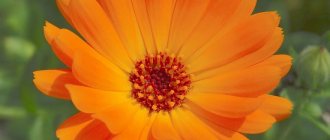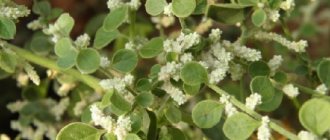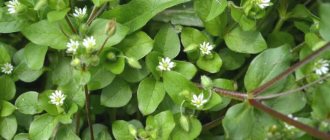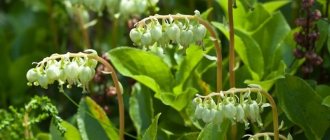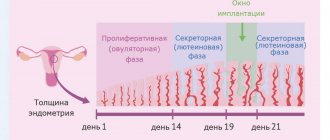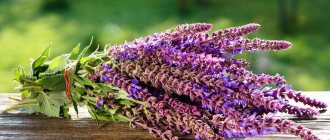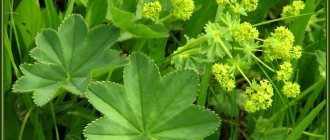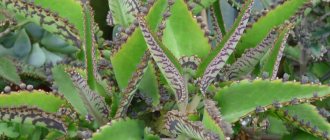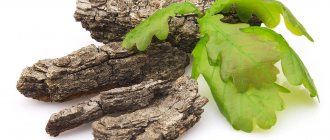Dill is one of the most famous plants in our latitudes, which is actively added to various dishes. It is mainly grown artificially, but dill can often be seen in the wild. The Romans and Egyptians also used it, noticing the pleasant smell and appreciating the healing properties of dill.
Thanks to the interaction of magnesium and iron, which are easily absorbed, dill stimulates the process of creating blood cells. The essential oils contained in dill stimulate digestion, increase the flow of bile and provide a weak diuretic effect. In addition, dill can work as a disinfectant for the treatment of the digestive tract, intestines and organs of the genitourinary system.
Beneficial features
It is from dill that a number of medicines are created that are taken for the maintenance treatment and prevention of heart disease. This is due to the fact that the anetine it contains promotes the natural dilation of blood vessels, which prevents the formation of blood clots and improves blood flow to all organs, including the brain. Dill is even used for stomach or intestinal ulcers - it can have an analgesic effect and relieve spasms.
Content:
- Beneficial features
- Treatment with dill seeds
- Recipes for treating diseases
- Dill seeds for newborns
- Use in cooking
- Contraindications to the use of dill
Everyone takes it as a seasoning, but few people know about the wide range of beneficial and medicinal properties of dill. Usually, parents who have a small child learn about its beneficial properties, since dill seeds help fight colic in babies. It is completely safe for babies due to its natural nature and acts as a spasm reliever and reduces the unpleasant colic that babies suffer from.
Few people know, but dill seeds also have a very rich composition.
It is these small grains that contain a wide range of elements, including zinc, essential oil for the body, and various vitamins. The plant has a fairly rich chemical composition, and it contains a lot of calories - about three times more than tomatoes. Chemical composition of dill (per 100 g)
| Vitamins | |
| Tocopherol (E) | 1.4 mg |
| Vitamin C | 1.7 mg |
| Vitamin B9 (folic acid) | 100 mg |
| Vitamin B6 (pyridoxine) | 27 mcg |
| Vitamin B3 (pantothenic acid) | 0.2 mg |
| Vitamin B2 (riboflavin) | 0.3 mg |
| Beta carotene | 750 mcg |
| Vitamin B1 (thiamine) | 0.1 mg |
| Vitamin PP | 4.5 mg |
| Vitamin A | 0.03 mg |
| Macronutrients | |
| Phosphorus | 0.6 mg |
| Potassium | 93 mg |
| Sodium | 335 mg |
| Calcium | 70 mg |
| Magnesium | 43 mg |
| Microelements | |
| Iron | 0.91 mg |
| Manganese | 223 mg |
| Copper | 1.264 mg |
| Zinc | 146 mcg |
How dill seeds can help:
- cope with insomnia;
- improve heart function;
- support the body in eliminating harmful substances and toxins;
- reduce blood pressure;
- stimulate the production of gastric juice;
- normalizes intestinal function;
- help fight lack of appetite.
The seeds normalize heart contraction, thereby supporting the fight against arrhythmia or atherosclerosis. This helps to stabilize blood vessels and improve heart function.
For problems in the genitourinary system, decoctions and infusions from seeds are used as a natural mild diuretic, which, among other things, helps remove toxins and waste. Here, the properties of dill seeds to cope with harmful bacteria also come to the aid of our health, as they help in the treatment of inflammation. In addition, they act as a weak choleretic agent and support the body in diseases when the flow of bile is impaired. Thanks to their ability to fight harmful bacteria, they help stop rotting processes in the digestive tract.
Few people know, but dill seeds help in the maintenance treatment of problems such as severe cough or bronchitis. The fact is that they are able to stimulate the cleansing of the bronchi, helping to thin out mucus.
Compound
The benefits of dill, known to traditional healers, are due to its chemical composition, which includes the following elements:
- essential oils;
- coumarin;
- resin;
- phenolcarboxylic acids;
- vicenin;
- wax;
- fatty acid;
- protein;
- folic acid;
- cellulose;
- kaempferol.
Dill is rich in various vitamins - A, B, PP (nicotinic acid), P (rutin). The leaves contain a lot of ascorbic acid. The structural formula also includes minerals important for life: potassium, calcium, phosphorus. Manganese, zinc, and magnesium were detected in different parts of the plant. Contains sodium, copper, iron, manganese.
Treatment with dill seeds
An infusion or decoction of dill is used for the supportive treatment of various diseases - the choice of remedy depends on the disease to be fought. Dried seeds, which have a pronounced effect, are equally suitable for this. There are many cooking methods, but in general the recipes are very simple and similar. For example, to prepare an infusion, you need to pour boiling water over dill seeds and leave for a while, then strain and take. The infusion time depends on whether you used fresh or dried seeds, as well as on the individual disease you are trying to fight. But there is one common property: it is believed that it is advisable to grind the seeds before brewing, so they will have a more pronounced effect.
To make a decoction, you need to pour dill seeds with water and then boil for a while. On average, you need 1 tbsp. raw materials per liter of hot water, the resulting mixture must be brought to a boil in a water bath and simmered for several minutes, and then allowed to cool and consumed. You can even use the seeds without pre-treatment, but in this case it is advisable to grind them into powder using a coffee grinder so that they are absorbed faster.
It would be useful to know
The desired effect of dill treatment is obtained if it grows in an ecologically clean area. After all, this culture perfectly absorbs heavy metals and harmful substances. Therefore, we plant it on our site and grow it without the use of chemicals.
We pay special attention to proper storage. We preserve all the healing qualities of dill seeds by storing them in a glass jar with a tight-fitting lid or in a ceramic container in a dry, dark place. We periodically look through the seeds. When properly stored, medicinal properties can last up to 5 years.
The following fact also applies: when heated (heated), herbal medicines lose their healing qualities. A large number of dill products are no exception. How do we proceed? If there is no clear instruction to “warm up before use,” then we don’t do it. And to take the product warm, it is better to prepare a fresh composition before each use.
Recipes for treating diseases
For stomach pain
If you suffer from pain and cramping in the stomach, you need to take 1 tsp. dill seeds (first grind them into powder), and add 250 ml of boiling water. It is advisable to do this in a thermos, or close the container with the liquid with a tight lid, wrap it with a warm cloth and leave it like that for a couple of hours. Drink the resulting infusion 150 ml several times a day 20 minutes before meals.
For diuretic effect
To achieve a pronounced diuretic effect in case of kidney disease, you need to take 1 tbsp. dry seeds (or use twice as much fresh), add half a liter of hot water. Infuse this mixture for about an hour and consume 100 ml before meals.
To prevent angina pectoris
To reduce the likelihood of angina, prepare an infusion of 1 tsp. seeds, poured 200 ml of hot water and left for 60 minutes. Carefully strain the resulting mixture and drink a couple of sips before meals.
For insomnia
For insomnia, a combination of dill seeds and wine (red and preferably sweet), in a ratio of 1 to 10, helps well. Combine, bring to a boil and boil a little. Then remove from the heat and let it brew for an hour, it is advisable to do this in a thermos or wrap the dishes with the infusion. It should be taken 50 g immediately before bedtime. This will help cope with insomnia.
Treatment of bronchitis and cough
In the treatment of bronchitis and cough, dill seeds are used as a natural and excellent expectorant. To do this, just take 300 ml of water, add 1 tsp. crushed seeds and place in a water bath. Boil the mixture for 10 minutes, leave for up to an hour and strain well. Add a little honey and 50 ml of milk to the mixture and drink half a glass before meals.
To combat eye fatigue and swelling of the eyelids
To combat fatigue or redness of the eyes, you need to use a decoction of a mixture of mint and dill seed powder; it is used for lotions. Mix 1 tsp. seeds and 1 tbsp. mint, add 200 ml of water and boil for 10 minutes. Then the resulting decoction must be carefully filtered, cotton swabs soaked in them and applied to the eyes for several minutes.
With increased acidity
If you have increased stomach acidity or problems with gall, use ground dry dill seeds: add 1/2 teaspoon to food, or while eating, simply take it orally and wash it down with water.
For kidney inflammation
To make an infusion of seeds to help with kidney inflammation, you need to take 2 tsp. raw materials, add 2 cups of boiling water and leave for 10 minutes. After this, the infusion must be strained well and sipped several times a day for 2 days. It is also good for colitis or to stimulate milk production in nursing women.
Botanical description
Dill is a herbaceous annual. Height: 30-80, up to 150cm.
- Dill root is straight, branched.
- The stem of dill is vertical, straight, round, finely grooved, curved between the branches, and branches in the upper part. Color: dark green.
- Dill leaves are alternate, three- or four-pinnately dissected into linear-filamentous segments. The upper ones are sessile, with white-edged vaginas. The lower ones are located on petioles, expanded into an oblong vagina 1.5-2 cm long.
- Dill flowers are small. The calyx teeth are short; subcolumn cushion-shaped; the columns are very short, straight during dill flowering, later bent; the stigma is club-shaped, capitate. Yellow color. Collected in double inflorescences-umbrellas containing 20-50 rays. Diameter: up to 15 cm.
- The fruit of dill is a two-seeded plant. The seeds are flat, oval-oblong, elongated-ovate. Color: brownish. Length: 3-7 mm, width: 1.5-4 mm.
Dill seeds for newborns
Dill seeds are great for newborn babies who often suffer from colic. This is an excellent alternative to chemical drugs sold in pharmacies. To help your baby, you need to prepare the following decoction: pour 1 tsp. seeds 250 ml of hot water and let it brew for an hour. Then strain the liquid thoroughly and give the child 1 teaspoon 3 times a day 20 minutes before feeding. If you are just starting to help your baby with dill seeds, give this infusion a little at a time, initially one teaspoon per day, to make sure that the child responds normally to this treatment.
Growing Seasoning
Dill is an unpretentious and cold-resistant crop that grows well in almost any conditions. Dill can be planted in April, May or before winter. The plant can even be grown at home on a windowsill. It takes 1–2 months before the greens are harvested, and 4–5 months before the fruits ripen.
If it is not possible to grow dill yourself, the spice can be purchased in dry form at a pharmacy.
The medicinal properties of the culture help fight many diseases, correct the figure, and improve appearance. Like any plant, dill has contraindications for use that need to be taken into account.
In what dishes and how often do you add dill? Tell your friends and acquaintances about the medicinal qualities of the spice by sharing this article with them.
Use in cooking
Best materials of the month
- Coronaviruses: SARS-CoV-2 (COVID-19)
- Antibiotics for the prevention and treatment of COVID-19: how effective are they?
- The most common "office" diseases
- Does vodka kill coronavirus?
- How to stay alive on our roads?
Dill is widely used for pickling vegetables, and even umbrellas with not yet ripened seeds are used. It is often used to flavor dishes, even to add a pleasant aroma to cheese, but it is recommended not to combine dill with spices, because its aroma and taste are already strong enough.
If you want to prepare dill for use in winter, you can simply dry it in a cool, dark place, and rest assured that it will not lose either its aroma or its beneficial properties. Seeds can also be harvested and stored throughout the year, using as needed.
Due to the ability of dill to dilate blood vessels, it helps get rid of headaches and migraines, and also helps to relax the intestines. This same property helps lower blood pressure when used regularly, but before doing so, you should consult your doctor. The properties of dill can be considered universal, since it is used to combat excessive salt deposits in combination with therapeutic massage and sports activities. It helps fight obesity by acting as a supportive medication in combination with diets and exercise. It is even recommended for use by those who suffer from diabetes.
A weak decoction of dill is used to relieve inflammation of the eyes and fight certain diseases such as conjunctivitis. The seeds of this plant are able to relieve spasms, fight harmful bacteria and enhance the removal of bile from the body.
If you do not like the taste of dill seed infusion, you can use it in its pure form. To do this, you need to take them orally 3 times a day in dry form with water. A small pinch is enough for the effect to be noticeable with regular use. This remedy is good for intestinal problems, including gas or constipation. Dill brings no less benefit to those people who have skin diseases, including those associated with improper functioning of the stomach or intestines.
Another way to use dill is to use a special essential oil made from it. The oil is taken 10-15 drops 3 times a day, it is advisable to combine it with sugar to brighten up the not very pleasant taste.
Benefits for men
Medicinal greens have different effects on the condition of different sexes. And although the scope of application for women is much wider, men will also appreciate the healing effect. In this case, men can use the effect of dill on blood vessels to their advantage. It manifests itself in its influence on the strength of male potency.
The wealth of various vitamins: PP, A, B1, B2, B5, B6, B9, E, and most importantly, vitamin C, universally affects not only the female, but also the male body. They will increase immunity, give vitality and help relieve irritability. For this reason, do not neglect this aromatic spice in the kitchen; men will definitely appreciate it. Many centuries ago, dill sprigs were considered strong stimulants of desire, and they are probably still used in this capacity. If your goal is to provoke sexual desire in your partner, you can resort to this recipe from our grandmothers and add a little greenery to the dish.
Contraindications to the use of dill
The use of dill seeds is contraindicated for those with low blood pressure, as it can lower it even further and aggravate the condition.
Women during pregnancy should use dill with caution. On the one hand, they are good for stimulating lactation, excellent for edema that often plagues pregnant women, and also help fight insomnia. In addition, it is a very effective remedy for constipation, which bothers pregnant women even if they eat properly. However, before including this type of medication in your diet, you should always consult your doctor.
More fresh and relevant information about health on our Telegram channel. Subscribe: https://t.me/foodandhealthru
We will be grateful if you use the buttons:
Interesting observations
If you are bitten by a bee, wasp or other insect, rub the bite area with dill. After all, the culture has excellent antipruritic properties, and the presence of antibacterial properties will help to quickly heal the sore spot.
Getting rid of obsessive hiccups is easy. Brew a spoonful of freshly chopped dill with boiling water, cool, and then drink.
We use the culture oil for bronchitis, coughs, and colds. It promotes the removal of sputum and accelerates the healing of wounds on the skin.
Don't forget about dill, dear women. It reduces the severity of symptoms of premenstrual manifestations and helps restore the cycle. Maintains calcium levels in the body during menopause and also protects against the risk of osteoporosis.
Habitat
Dill in its wild form is distributed in the Mediterranean countries, North Africa, Iran, southwestern and central Asia, and the Himalayas. It is cultivated everywhere, both on an industrial scale and in vegetable gardens and household plots. Sometimes he runs wild.
In its wild form, dill is found in the Baltic states, in the south of the European part of the CIS, the Caucasus, and Central Asia.
The plant is light-loving and does not tolerate shade. Prefers rich, well-loosened soils. In warm and hot summers you can get a rich harvest of fresh dill.
